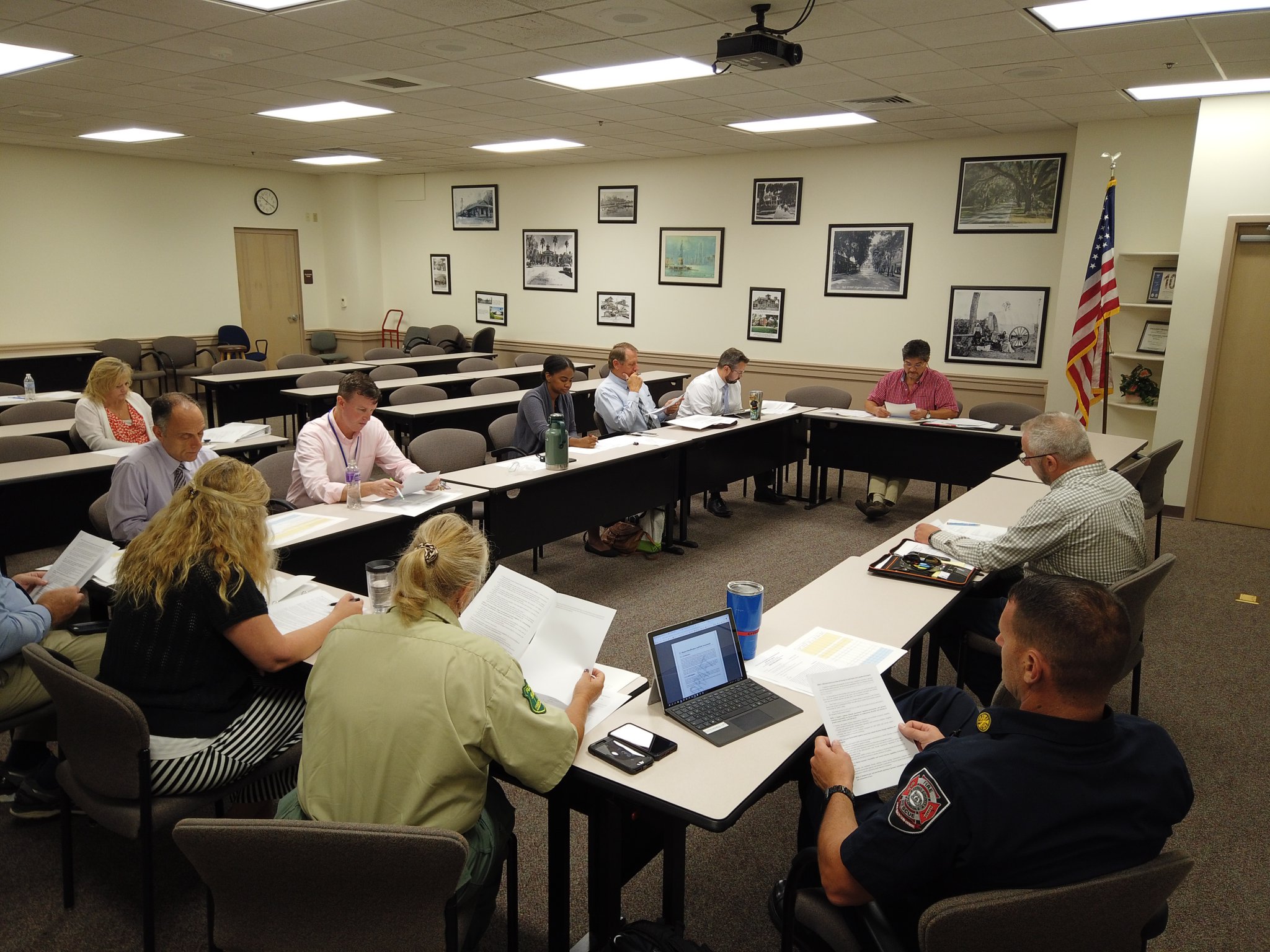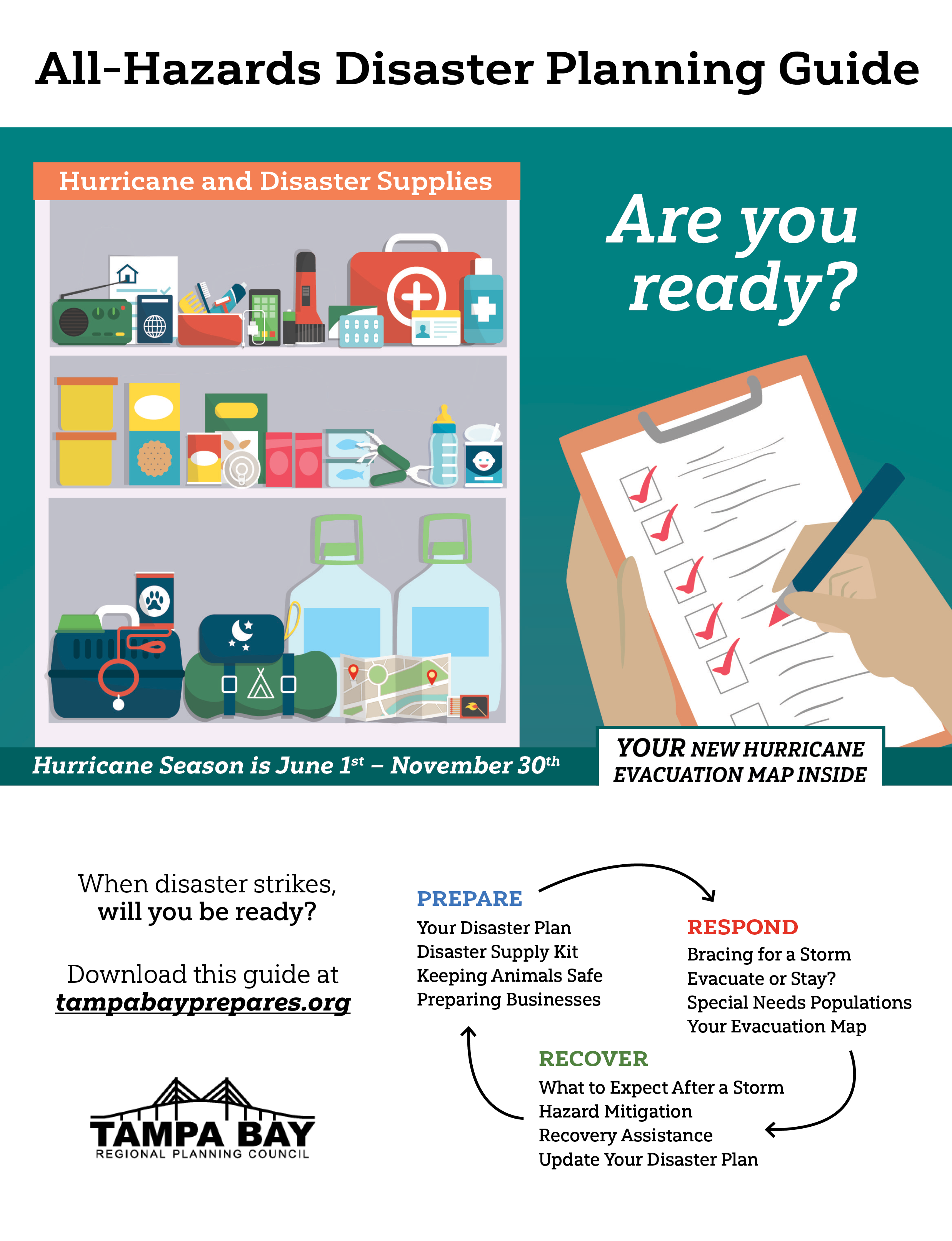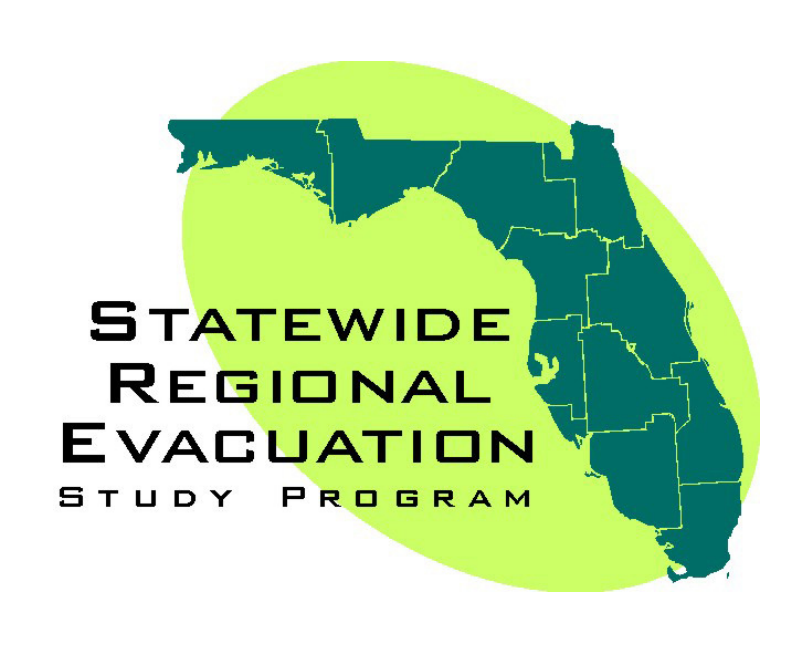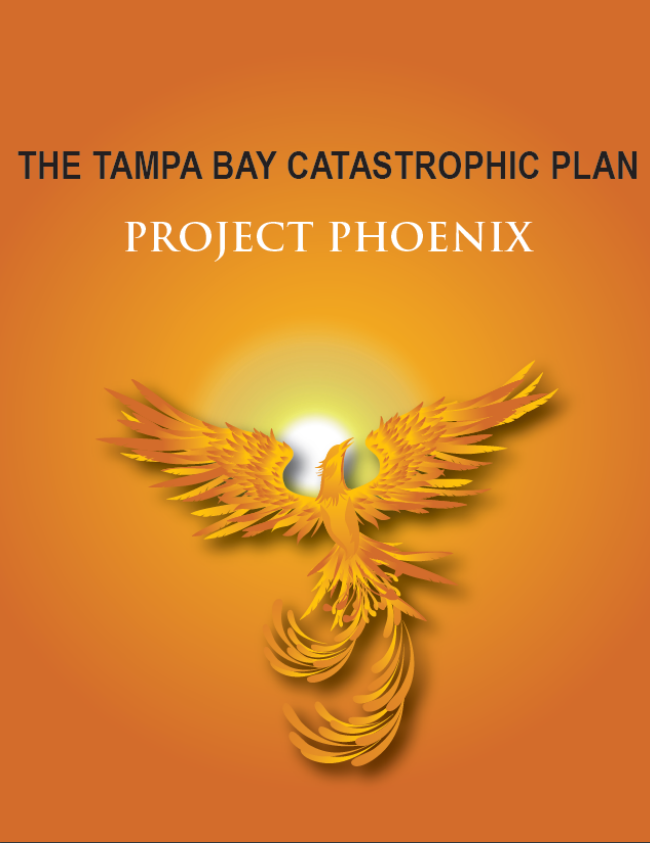PREPAREDNESS
PREPAREDNESS
PREPAREDNESS
Preparedness
Recent hurricanes, flooding, tornadoes, and the tragic events of September 11th have emphasized the need for everyone – families, businesses, agencies and institutions – to be prepared.
This website is part of the official regional awareness program prepared and sponsored by the TBRPC, your County Emergency Management Agency, the National Weather Service, the American Red Cross, and the Florida Division of Emergency Management. We hope you will use the information on this site to make your family and business disaster plans and to ensure your family’s safety and security.
COVID-19 Updates
Topics
Program Highlights
OBJECTIVES
Emergency Preparedness Planning
Emergency Preparedness is one of the five mandated issue areas of the Strategic Regional Policy Plan. TBRPC has maintained an emergency management program since 1978, facilitating regional emergency management communication through the Emergency Management Directors’ Committee, Region 4 Emergency Management Committee and its subcommittees. Staff seeks grants and private sector sponsorship to address major issues identified by the Emergency Management Committee and provides technical data to the local emergency management community.
Federal and State law charges the Local Emergency Planning Committee (LEPC) with responsibilities for hazardous materials planning, training, exercising, and maintaining records to support the public’s right-to-know under the Emergency Planning and Community Right-To-Know Act (EPCRA). Staff is also responsible for assisting facilities to comply with the Florida Accidental Release Prevention and Risk Management Planning Act (ARP/RMP) of 1999. Staff is responsible for planning LEPC meetings and assisting the LEPC Chair in conducting business.
Objectives
- Promote emergency awareness and preparedness within the region through public education.
- Provide evacuation planning coordination services to the region.
- Facilitate the development of the Regional Multi-Year Training and Exercise Program for the Region and coordinating multi-discipline training /exercises.
- Address the issues of shelter deficit, address functional needs and special services, post-disaster redevelopment and hazard mitigation through research, and regional coordination and cooperation.
- Build public-private partnerships in the region to foster a “whole community approach” to our disaster response and recovery capability and promote preparedness and hazard mitigation.
Tasks and activities to support these objectives include but are not limited to:
- Facilitate and support emergency management initiatives in the region.
- Produce Annual Hurricane/All Hazards Guide.
- Continue to provide training and conduct exercises for first responders.
- § Promote awareness of presence of hazardous materials and safeguard needs.
- § Provide training opportunities for public sector responders to HAZMAT incidents.
- § Maintain and update regional plan for hazardous materials incidents response.
- § Serves as resource for public’s right-to-know.
[§ – denotes LEPC statutory responsibility under Federal and State law and a Council responsibility by contractual obligation.]
HAZARD MITIGATION
Hazard Mitigation
TBRPC coordinates resources for member governments updating and maintaining their Local Mitigation Strategy (LMS) in accordance with the Disaster Mitigation Act of 2000 (DMA 2000). TBRPC staff also convene a regional group of hazard mitigation professionals to share resources and best practices when updating their local mitigation strategy.
Current Hazard Mitigation Initiatives:
Local Emergency Planning Committee
The Tampa Bay Local Emergency Planning Committee (LEPC), is charged with facilitating regional hazardous materials emergency response and compliance with hazardous materials reporting laws. Title III of the Superfund Amendments and Reauthorization Act (SARA), also known as the Emergency Planning and Community Right-to-Know Act of 1986 (EPCRA), requires public and private facilities that use, produce or store extremely hazardous substances or hazardous chemicals, to report their inventories on an annual basis.
TBRPC serves as the public access repository for the reports filed under Sections 311/312 of EPCRA in the Tampa BayLEPC area which includes Citrus, Hernando, Hillsborough, Manatee, Pasco, and Pinellas counties. This information is used to compile local and regional hazardous materials emergency response plans which are put into action in the event of a chemical emergency. The plans are updated regularly as more facilities come into compliance or as inventories change.
DISASTER PLANNING
Disaster Planning Guide
TBRPC’s All-Hazards Disaster Planning Guide provides preparedness information for hazards including hurricanes, floods, tornadoes, hazardous materials, and terrorism. The guide includes hurricane evacuation maps for participating coastal counties in the Tampa Bay area.
Printed copies of the All-Hazards Disaster Planning Guides are available throughout the region in participating counties. Spanish-language versions are also available for select counties. For a list of pick-up locations, or if you need assistance in locating your zone, evacuation route, or evacuation shelter, please contact your county’s Emergency Management office.
Hurricane Resource Hub
The Hurricane Resource Hub provides preparedness information and resources for the Tampa Bay Region. The hub includes a map with the evacuation zones for the entire State of Florida, a live storm tracker, and links to emergency management agencies such as the National Hurricane Center, FL Division of Emergency Management, Federal Emergency Management Agency, and the State of Florida Weather Information.
This page also includes links to each of the 6 County’s Emergency Management Departments as well as a Frequently Asked Questions about hurricane preparation section with links to resources and info sheets.
Regional Evacuation Study for Tampa Bay
The Florida Division of Emergency Management, Division of Community Planning (now Department of Economic Opportunity), and Department of Transportation in coordination with TBRPC developed the Statewide Regional Evacuation Study for the Tampa Bay Region in 2010. This report updates the region’s evacuation population estimates, evacuation clearance times and public shelter demand.
Florida State Legislature has approved funding for Statewide Regional Evacuation Study Update. The new update will bring two new Storm Basins online, which will lead to new surge zones and evacuation zones. Demographics and transportation will also be updated for the whole state.
Tampa Bay Catastrophic Plan
The Tampa Bay Catastrophic Plan was created to address the challenges of response and recovery during a catastrophic event in the Tampa Bay area. A large catastrophic incident could result in sustained widespread impacts over a prolonged period of time; almost immediately exceeding state, local and private‐sector resources in the impacted area. It will significantly interrupt governmental operations including emergency services and threaten public safety and national security. These factors drive the urgency for coordinated planning to ensure accelerated federal and state assistance.
BUSINESS RECOVERY
Project Phoenix 2.0: The Recovery
What if a Category 5 hurricane struck the Tampa Bay region? How would the events unfold, and what would the region look like in the aftermath of the storm? Project Phoenix 2.0: The Recovery is a facilitated training exercise that examines critical issues and capabilities of Tampa Bay area small businesses and emergency management agencies during disaster recovery. A series of videos supplement the exercise; illustrating a simulated Category 5 hurricane hitting Tampa Bay paralleled with lessons learned and words of advice from small business owners impacted by Hurricane Michael in 2018.
Business Continuity Planning
The U.S. Department of Commerce’s Economic Development Administration (EDA) awarded a grant to support five disaster economic recovery coordinator positions that work to support economic recovery efforts in Florida in the wake of Hurricane Irma. Disaster Recovery Coordinators for each locality support enhanced recovery efforts by helping coordinate the efforts of local governments, economic development organizations, and individual business. This project also provides direct assistance in navigating and accessing the numerous resources, available from multiple agencies, to aid in recovery and resilience activities.














